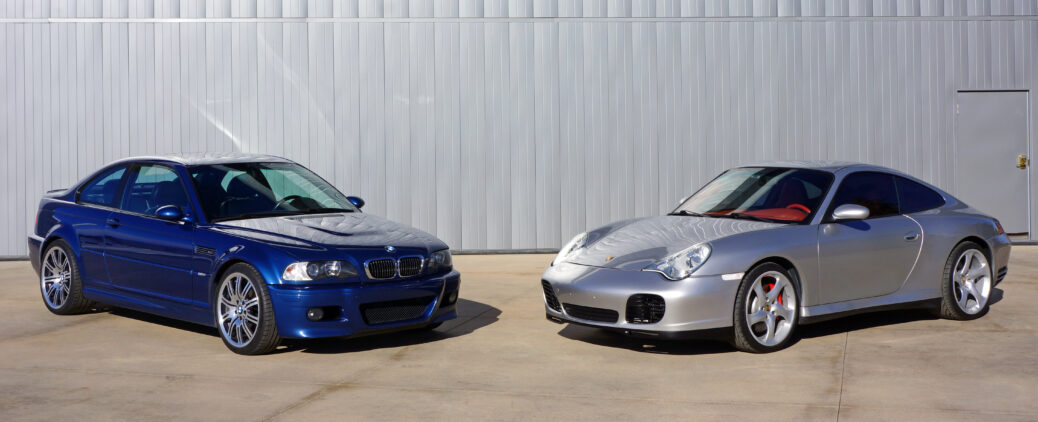Two decades ago was a great time to be a car enthusiast. In the Venn diagram of size, power, overcomplication, and reliability, the early aughts were perfection: By then the automotive arms race of the 1990s had escalated, but not model-crept into the realm of the ridiculous, striking the sweet spot of sublimity from behind the wheel. In Goldilocks’ terms, the enthusiast-car porridge was just right.
If you favored cars from Munich and Stuttgart, two of the best examples of that porridge were the BMW E46 M3 and Porsche’s 996 911. This month I just happened to have an example of each at my disposal, both 2002 model years—exactly twenty years old.

Phoenix Yellow and Laguna Seca blue were launch colors of the E46 M3. (Courtesy BMW AG)
The third-generation BMW M3 was released in 2000 as a 2001 model, powered by the 3.2-liter 333-horsepower S54B32 engine. It featured either a six-speed manual gearbox or the U.S. market’s first automated manual (SMG, in BMW-speak, for Sequential Manual Gearbox), starting in 2002. It also featured a mechanical limited-slip differential, and upgraded suspension, brakes, and wheels.
Like the original E30 M3, although similar at first glance, the E46 M3 shared few sheet-metal bits with the standard 3 Series. In the E46 M3, the power bulge in the hood made its first appearance, as did a quad-tipped exhaust. Inside were bolstered sport seats, a sport steering wheel, and unique interior trim. Launch colors were Phoenix Yellow and Laguna Seca Blue, the latter commanding comically high premiums these days—if you can find one that isn’t tainted. (I’ll save the legend of the Curse of Laguna Seca Blue for another column.)
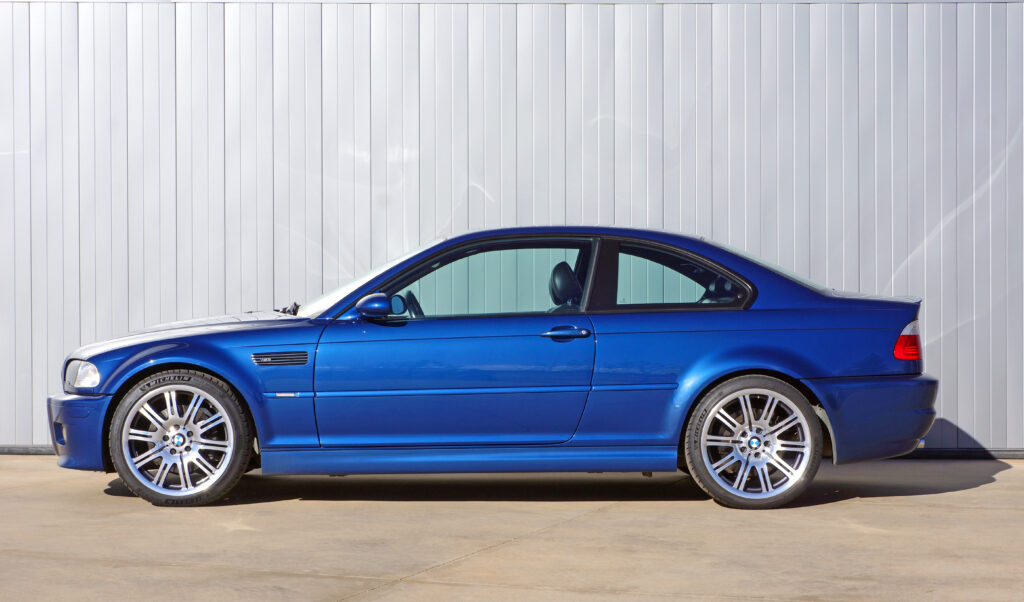
Fewer than 400 Topaz Blue M3s found their way to the U.S. market.
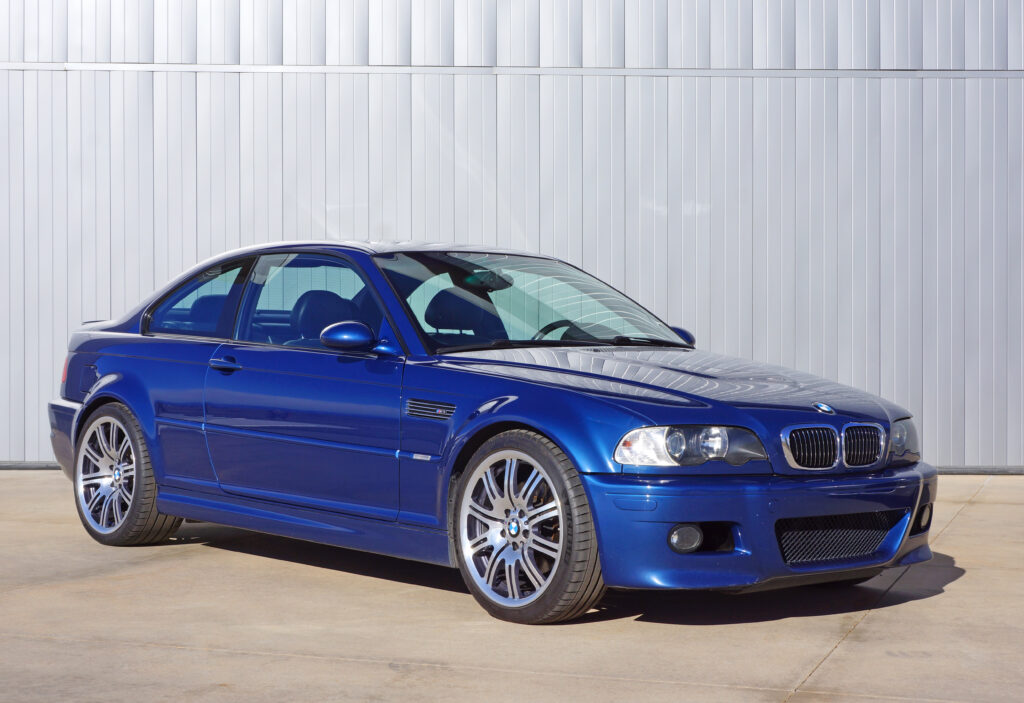
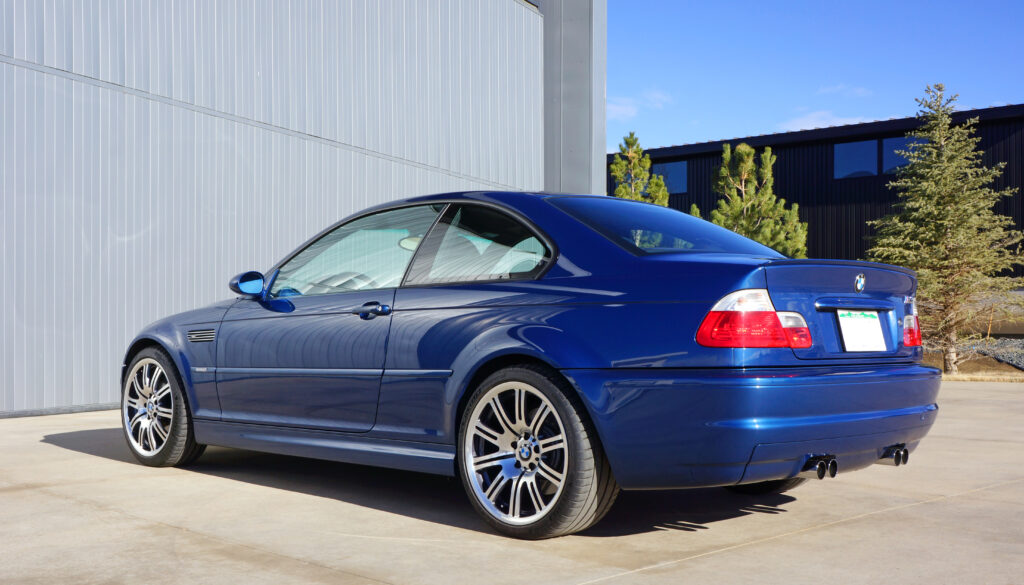
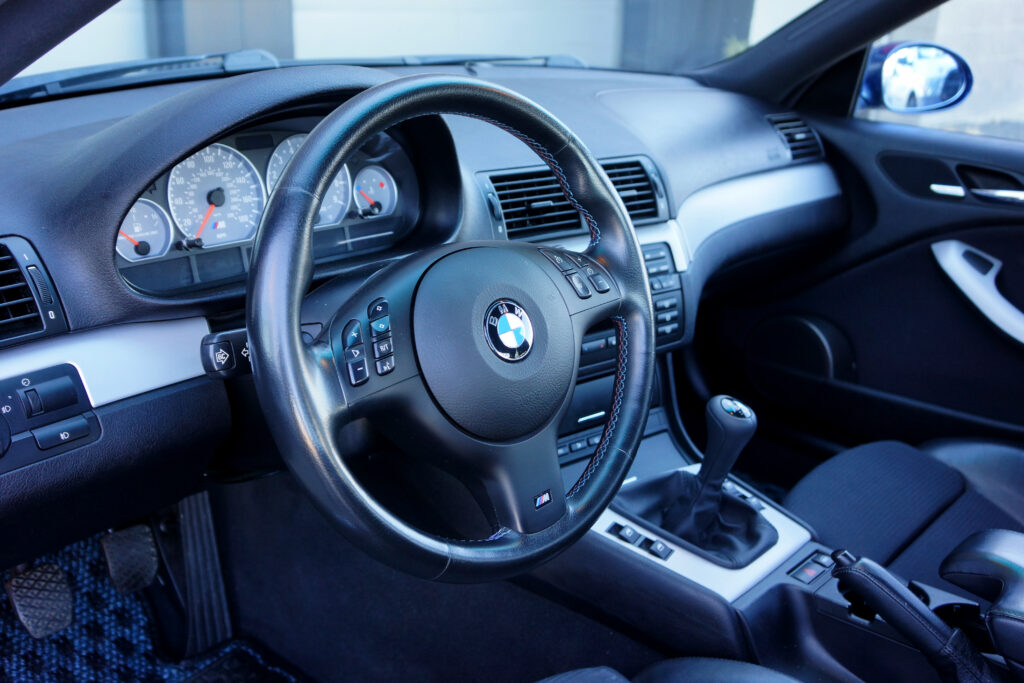
M-colored stitching in the steering wheel is a subtle M3 nicety.
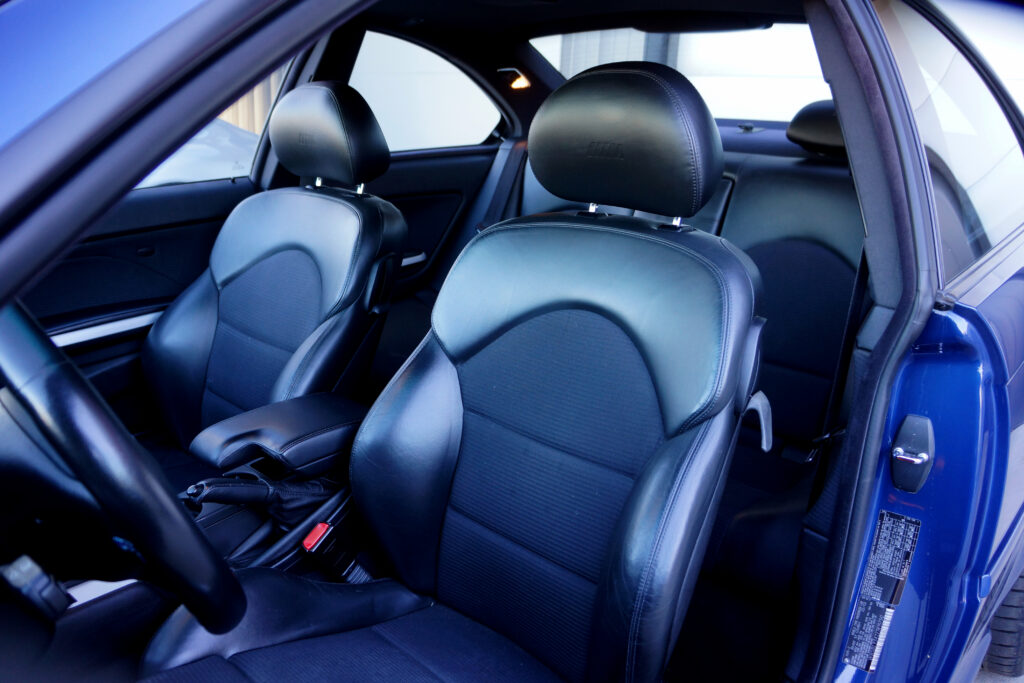
Anthracite Impulse cloth was another rare option.

Nineteen-inch wheels look fantastic on an early pre-LCI E46 M3.
This Topaz Blue M3 is one of the most unusual examples I’ve ever seen. Being a 2002 model year, it is a pre-life cycle impulse (LCI—facelift, in BMW-speak) car, and does not have the later car’s LED taillights and other slight revisions. But because it is a pre-LCI M3, it is Topaz Blue (a very rare M3 color), which the more common Mystic Blue replaced for the post-LCI M3.
Inside, where leather usually resides, this car features anthracite Impulse cloth—another rare option for a U.S.-market car which lends a European feel. Other notable pre-LCI options are brushed-aluminum trim and nineteen-inch wheels. Somehow, it has over 100,000 miles on the odometer, which means that you can actually use and enjoy it without depreciating its value. However, it presents itself like a car with barely five digits on the odometer—a testament to the loving care it was given by its previous stewards.

The Porsche 996 Carrera 4S was released for the 2002 model year. (Courtesy Porsche UK)
The Porsche 996 911 was released in 1999, with the 996.2 (facelift revision) debuting for the 2002 model year. The 911 Carrera 4S (C4S) model came with the facelift, featuring the new 3.6-liter M96.03 engine—good for 320 horsepower— with a six-speed manual gearbox or Tiptronic automatic. I chose a 996 C4S for this comparison because I just happened to have one, but it also illustrates options that were not offered with the M3, while still matching it closely in performance. The 996 C4S featured the Turbo’s all-wheel-drive system, brakes, suspension, wheels, and wide-body looks.
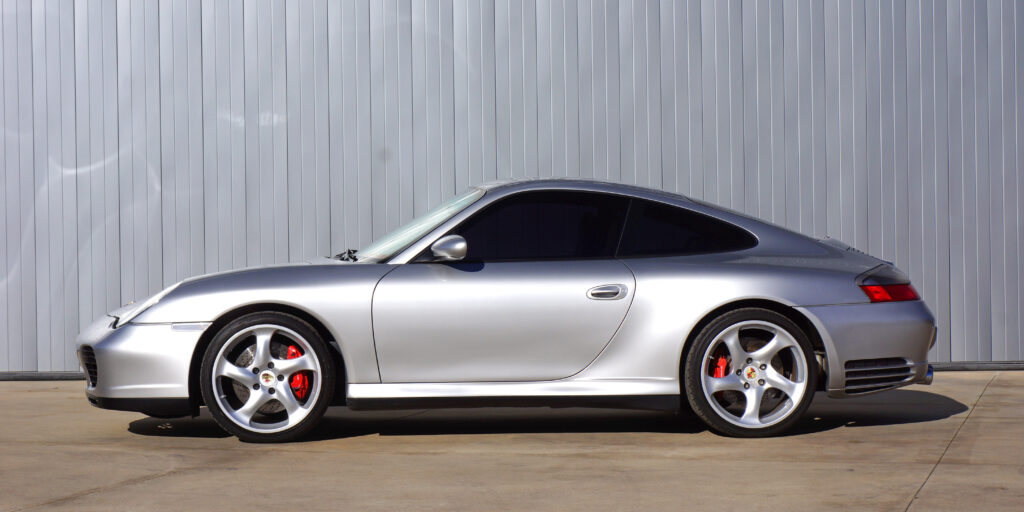
The most popular 996 color was Arctic Silver.

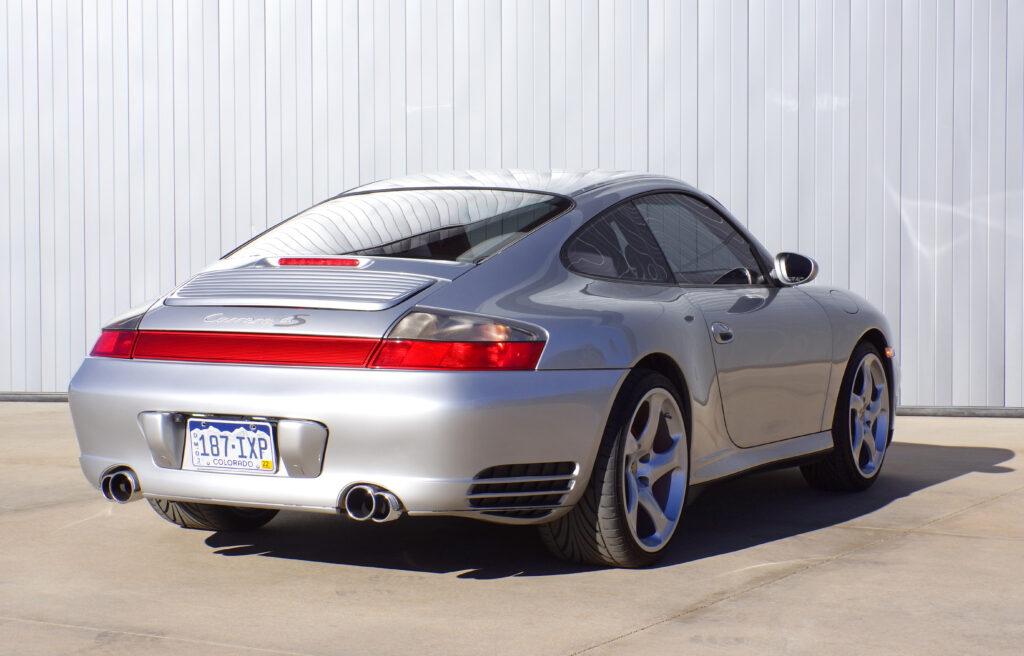

Underneath that silver lies a Boxster Red special full leather interior.

Sport seats were an option for the 996 C4S. Painted seat backs make them even better.
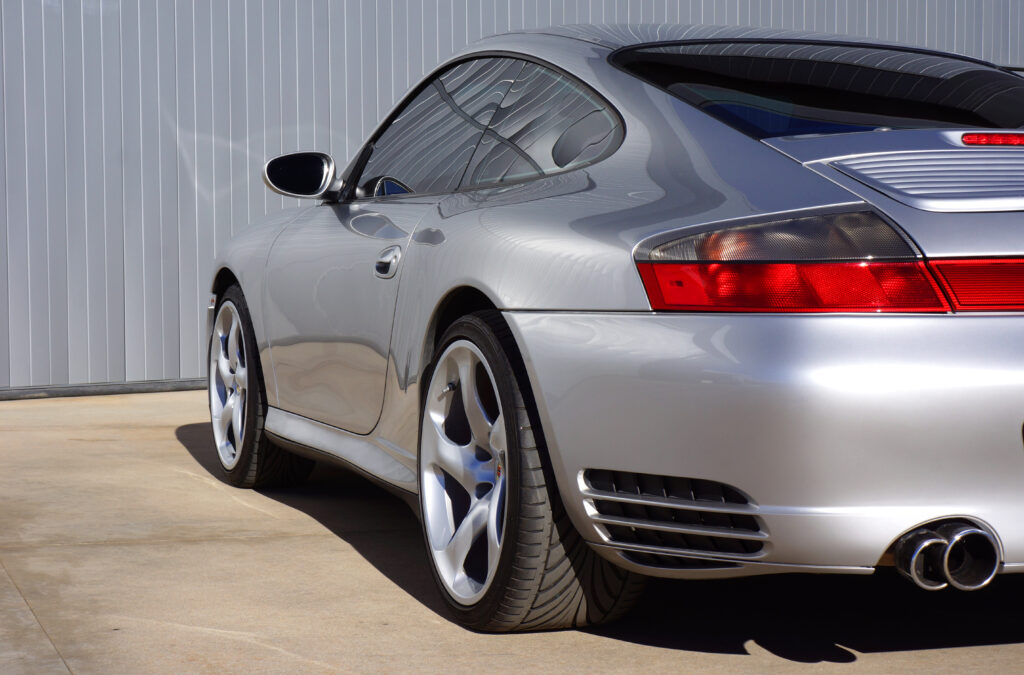
Concave nineteen-inch Augment Wheel Turbo Twist wheels are a modern iteration of the classic Twists.
Other than being Arctic Silver, this 996 C4S is also unique. Under that silver exterior is a Boxster Red special full leather interior. Porsche uses euphemisms like “special” and “full” to describe its fancy interiors, which translates to more money and more cowhide in layman’s terms. If you are a member of the Red Interior Appreciation Society, then you will find this 911’s accommodations simply exquisite. The red is offset by silver seatbacks, a silver console, and silver trim blanks on the dashboard. Factory options include heated sport seats and the Bose sound system.
The list of upgrades is long, but notable options include Augment Wheel’s nineteen-inch concave “Turbo Twist” wheels, 997 Turbo brakes, a modern Alpine stereo, and a custom exhaust. This C4S also has an odometer reading in the low-six-digit range, but like the M3, it seems a much lower-mileage car.
Before we go any further, a little history is in order. In a word, the BMW E46 M3 was perfection: It was a blank-sheet evolution of the E36 M3, which, despite being neutered for the U.S. market with the S50B30US and S52 engines, is resoundingly recognized as one of the best driver’s cars ever. The E46 M3 upped the ante even more, leveling the U.S. market with a virtually identical car to what was offered in Europe, with more power than the E36, more refinement, and better performance across the board. In the annals of motorsport journalism, reporters had to dive deeply into the trivial domain to find a bad thing to say about the E46 M3; if anything, their biggest frustration was that there were no complaints.
While few were originally sold at MSRP, that figure hovered in the mid-to-high-$40,000 range, offering tremendous value for its capabilities.

The E46 M3 had few complaints to begin with, while the 996 C4S remedied many of the early 996’s ailments.

The Porsche 996 911 was also a blank-sheet design, the first water-cooled 911 and a dramatic departure from the measured and incremental evolution of previous 911s. But for many 911 purists, the 996 was an offensive ugly-headlight mass-market dilution of the one model that had defined the brand for decades.
In the late 1990s, Porsche had a brush with bankruptcy literally for making its cars too good; the assembly times were abysmal, and the process was more akin to a workshop than a manufacturer. This led to prices that would make even Jerry Seinfeld blush—if just a little. The 996 fixed this with assembly-line improvements (thanks to a team of consultants from Toyota) and parts commonality with the Boxster—the model that saved Porsche from the brink. As a result, complaints about cheap plastics, build quality, and controversial looks abounded. Many of these were remedied by the 996.2, including less-offensive headlights that were shared with the Turbo rather than the Boxster.
For the C4S, the biggest elephant in the room is an MSRP in the mid-$80,000s, almost double the price of the M3.
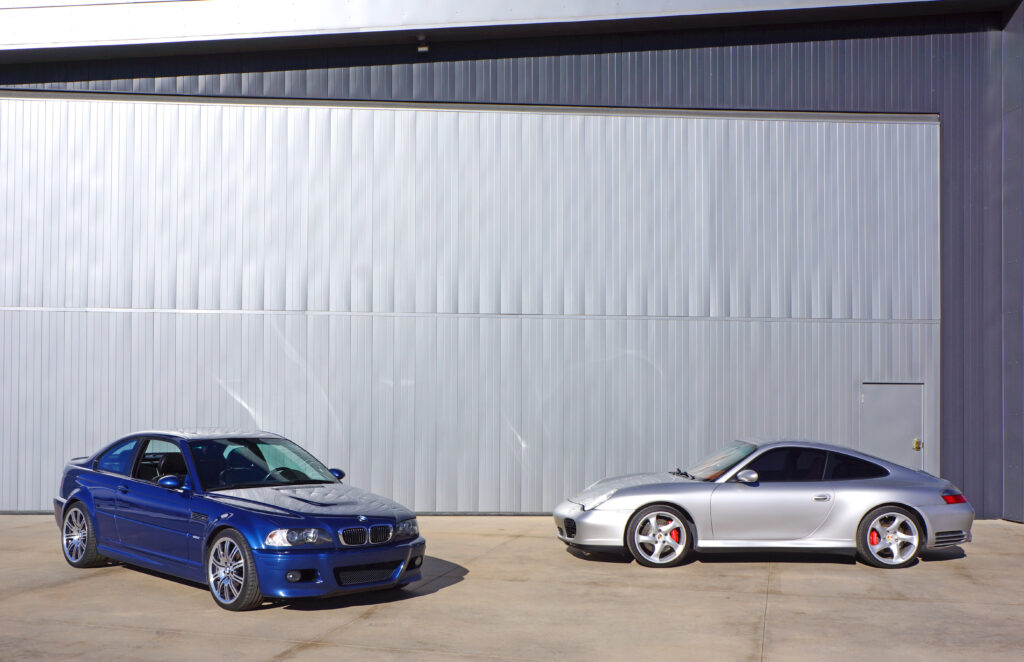
Two decades have been kind to these cars.
Through the lens of the present, both of these cars have aged wonderfully. The E46 M3 is as good now as it was twenty years ago, and as the modern M3 has evolved beyond the analog qualities of the E46 M3, the collector market has responded. But you can still find a really nice E46 M3 for a reasonable price; the mid-$30,000 range is the general rule for a sorted higher-mileage, driver-quality example.
With twenty years of hindsight, all of the complaints about the 996 are what make it utterly fantastic by modern standards. From a visceral perspective, the 996 feels more like a 993-generation 911 than the 997 generation that followed it. Yet, it has modern comforts like a cup-holder and air conditioning that actually blows cold. I even appreciate the headlights—because they are different. Even with the pandemic’s car-pricing boom, if you are patient, a good higher-mileage driver-quality 996 C4S can also be found in the mid-$30,000s.
The M3 has more horsepower and is faster than the C4S (4.5 seconds versus five seconds flat zero to 60), but the Porsche is slightly lighter and more rigid—not to mention all-wheel drive. Both cars have mechanical issues: The pre-LCI M3 suffers from faulty rod bearings, VANOS rattle, broken exhaust- hub tabs, and subframe failures. The 996 has intermediate-shaft-bearing (IMS) failure, cylinder-bore scoring, and air-oil-separator issues. These are well documented, but they can be preventively addressed, and generally affect a minority of the population.
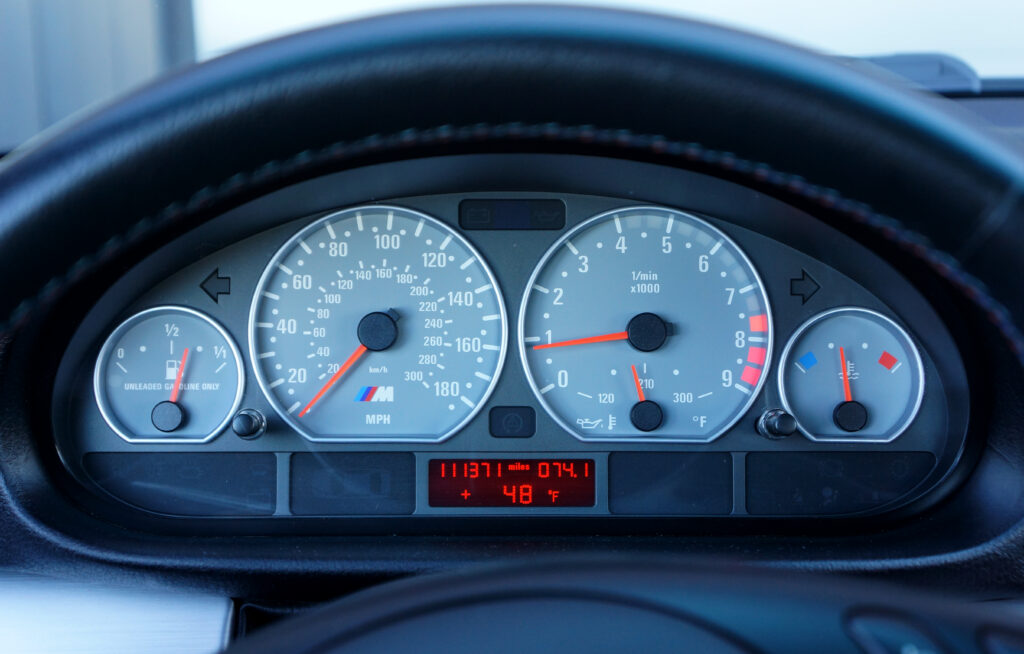
The E46 M3 trumps the 996 C4S’s redline by 1,000 rpm, but the 996 C4S has more gauges.
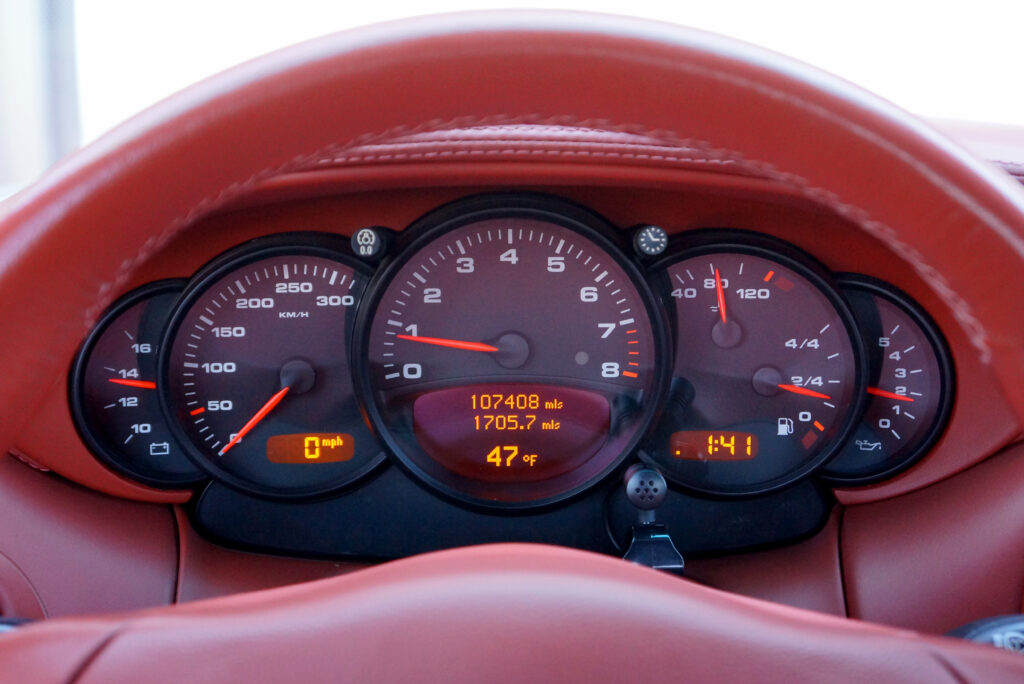

The E46 M3 also has a usable rear seat—but the C4S’s rear seat is red!
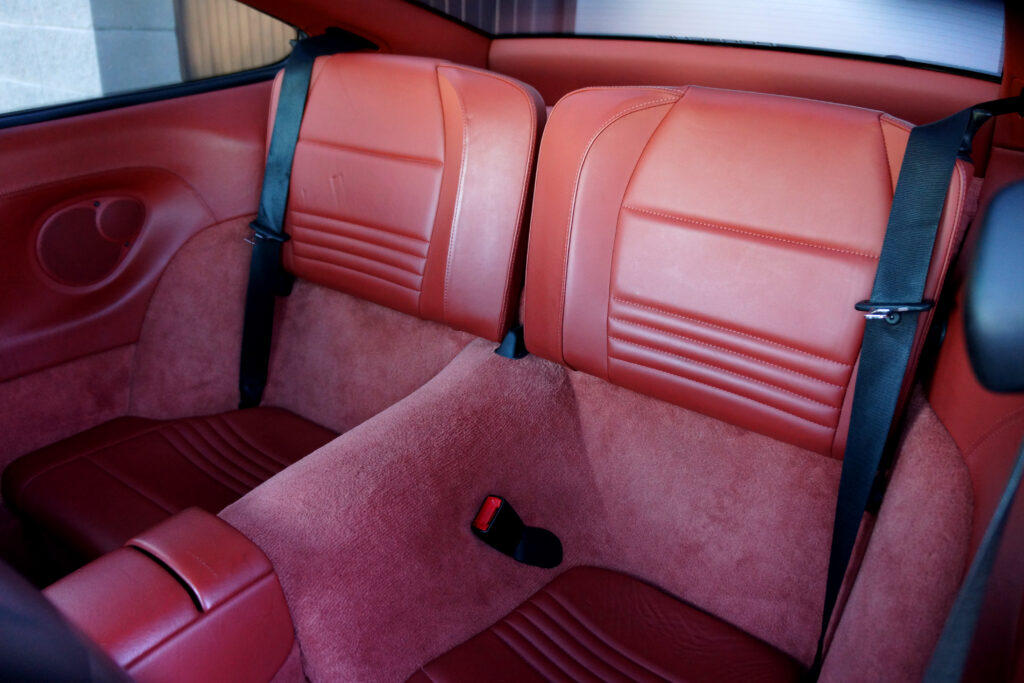

The E46 M3 S54 engine is good for 333 horsepower, the 996 C4S’s 320.
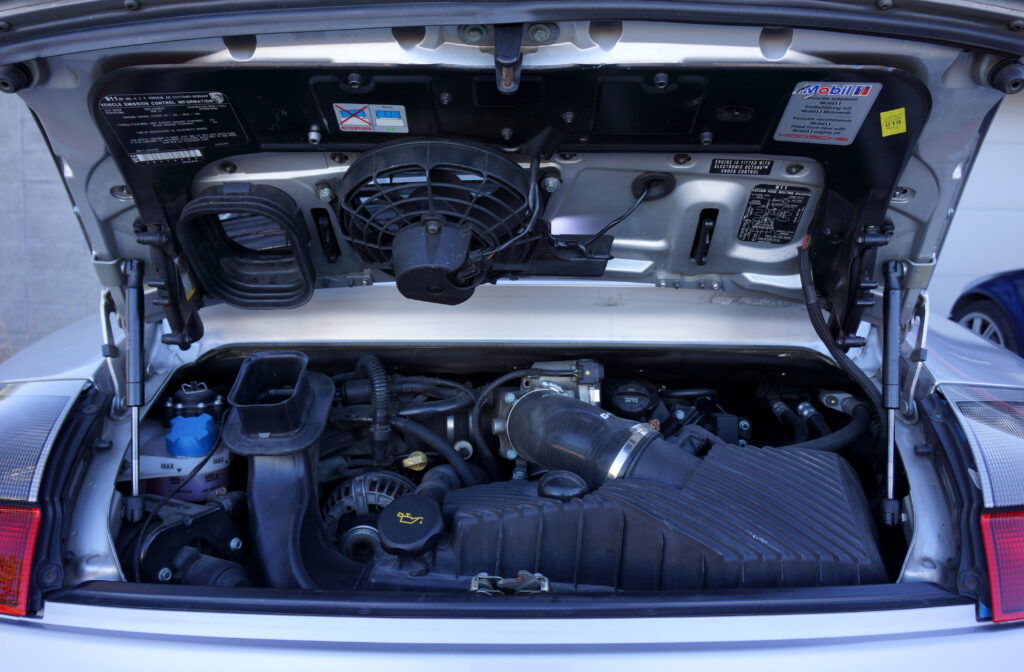
Both of these cars are truly special examples that stand out from their peers. From behind the wheel, the M3 does everything you ask of it; the steering is telepathic, the suspension balance is perfect, and the brakes are fantastic. The S54 engine has the characteristic smoothness of a BMW inline six, with the bulk of its power delivered between 4,000 and 8,000 rpm. Revving to that redline offers no shortage of theatrics, but slight throttle-by-wire delay and a lack of low-end grunt mean that some planning is needed to exploit its power. A hint of factory understeer can be negated with camber plates or square wheel widths. The ease at which the M3 can be driven near the limit inspires confidence, but there is a wonderful subtlety to it, giving it a wolf-in-sheep’s-clothing split personality—all in a package that does an excellent job of just being a car. It has fantastic visibility, surprising comfort, and a usable back seat that can be folded down to increase trunk space.

The E46 M3 dashboard is tidy and organized, while the 996 C4S has a modern stereo and carbon-fiber trim on the shifter.
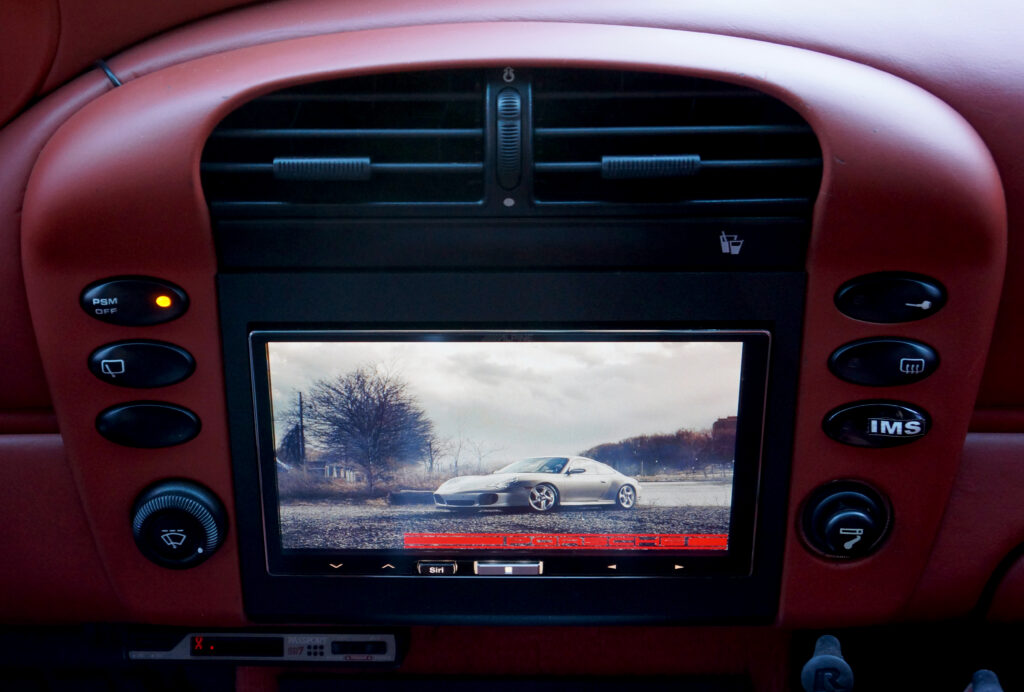
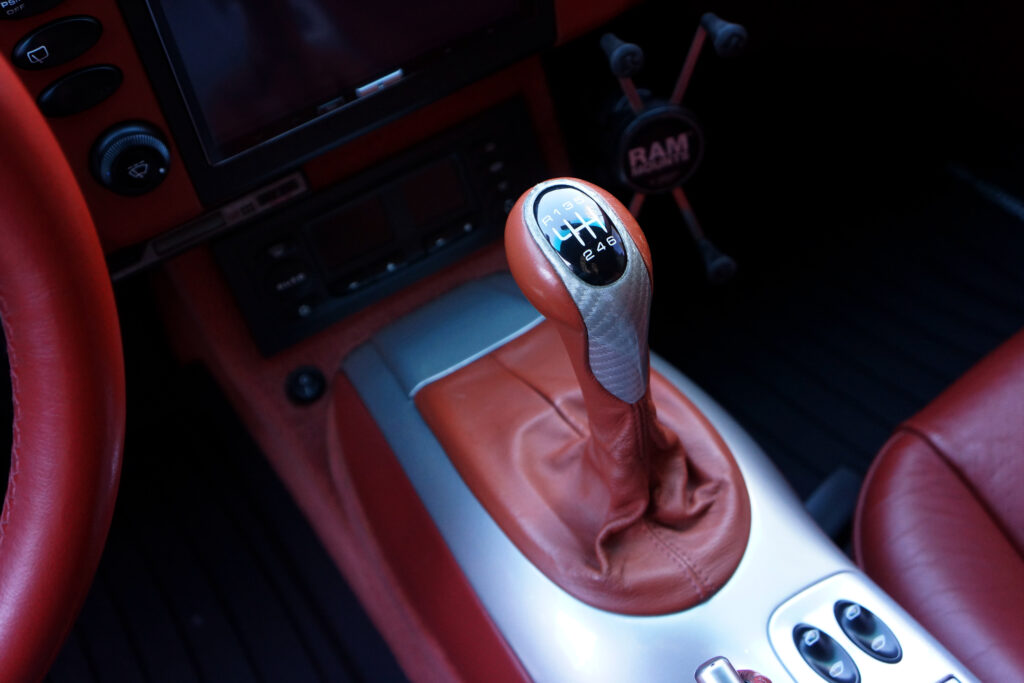
If the M3 is a sport sedan, the 996 C4S a proper sports car. Where the M3 has a sum-greater-than-its-parts subtlety, driving the 996 C4S is an occasion. The beauty of any 911 is that it is a sports car that you can drive every day and not hate. The occasion in this example is only heightened by an absolutely glorious exhaust note; aside from the GT3, the factory 996 exhaust note leaves much to be desired, but the combination of headers, cross-pipe, and mufflers in this C4S trumpets to the world the M96 engine’s full potential. Add to that the C4S’s all-wheel-drive system and you have a genuine four-season sports car. The AWD system also balances the 911’s inherent understeer-until-it-oversteers rear-engine tendencies.
Despite being a 996.2, the plastics in the interior still feel cheap, and the cup-holder is a joke, which is only outdone by the comedy of trying to fit even the smallest adult in the back seats. Maintenance and parts will be more expensive than the M3, but I would still prefer a 996 with an IMS upgrade to a 997.1 without it. And while you can find a good 996 C4S for $35,000, one as rare as this one will command a $10,000 to $15,000 premium, putting it well within the price envelope of a 997 or a low-market 996 Turbo.

There is no wrong choice between these two legends.
The beauty of this comparison is that there really is no bad option. On price, performance, practicality, maintenance costs, and reliability, the M3 is the better car—especially an example as unusual as this one. Driver talent being equal, the M3 will be faster in autocross, and on the track as well. But we strive for these cars is the overall experience, and the 996 C4S offers that sports-car experience in a way that you can still use every day. Add some snow tires and a roof rack with rally lights, and you will be a hero on the way up to the ski slopes.
In the end, there is no wrong decision. What matters is that both cars will make you smile, and life is too short for anything less.—Alex McCulloch
[Photos by Alex McCulloch.]

